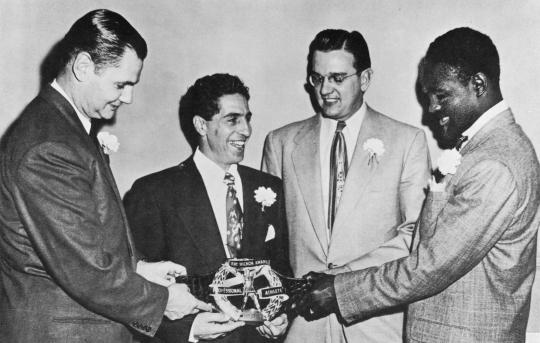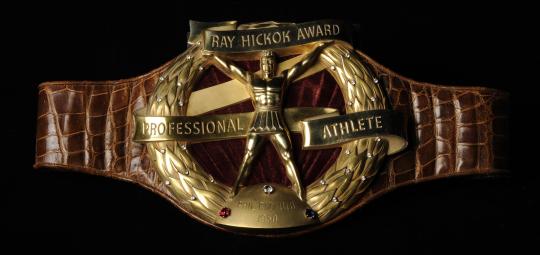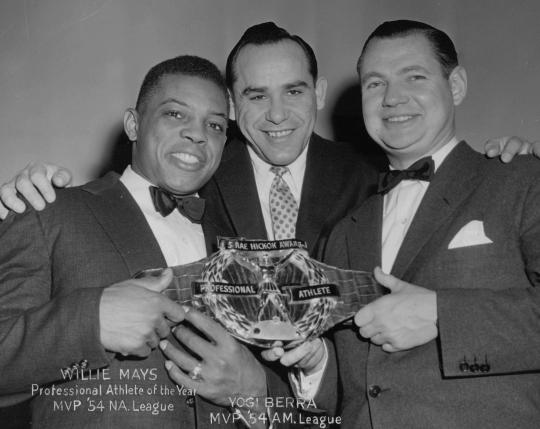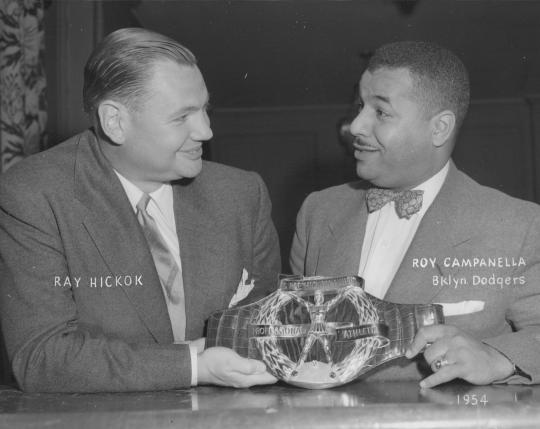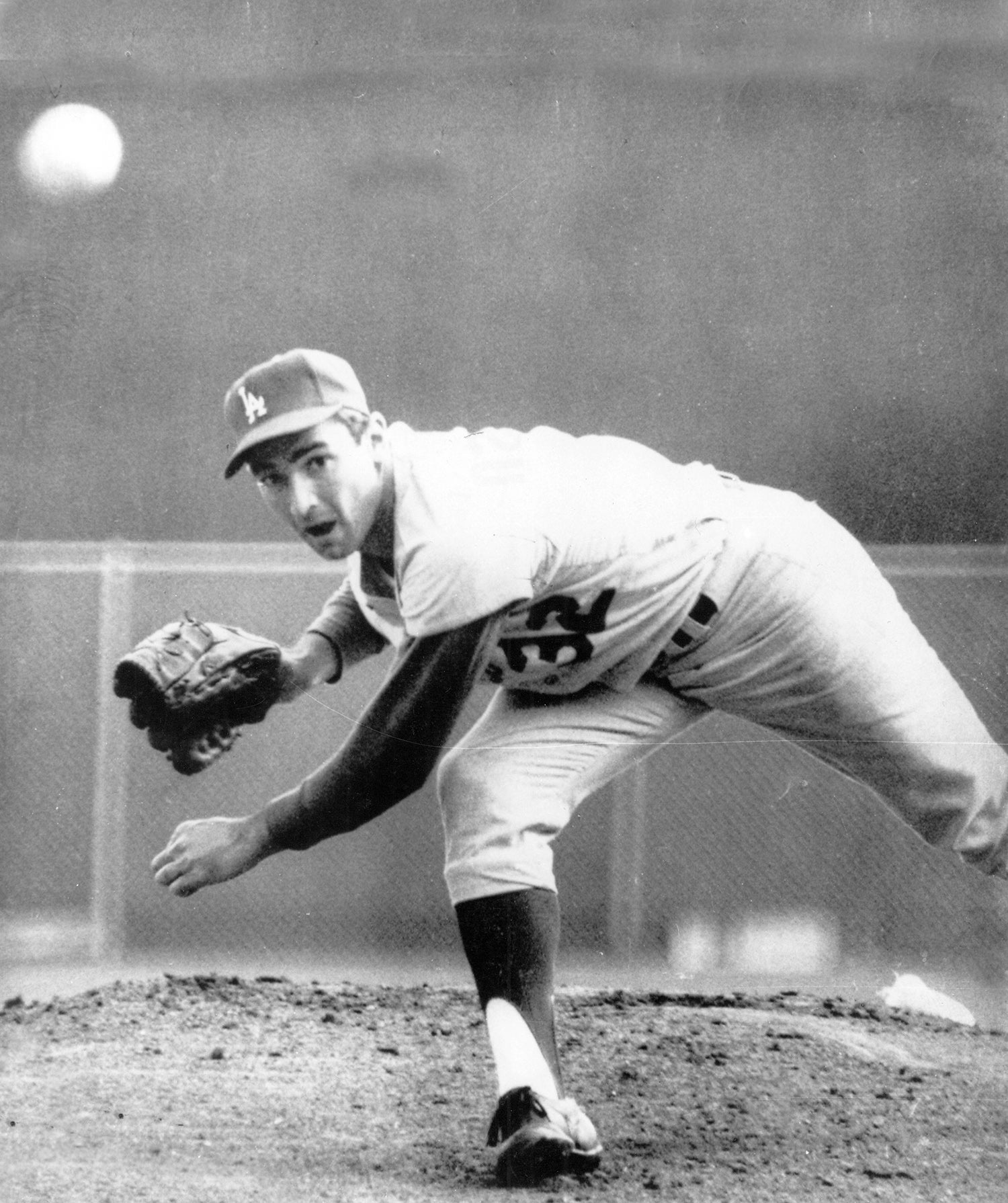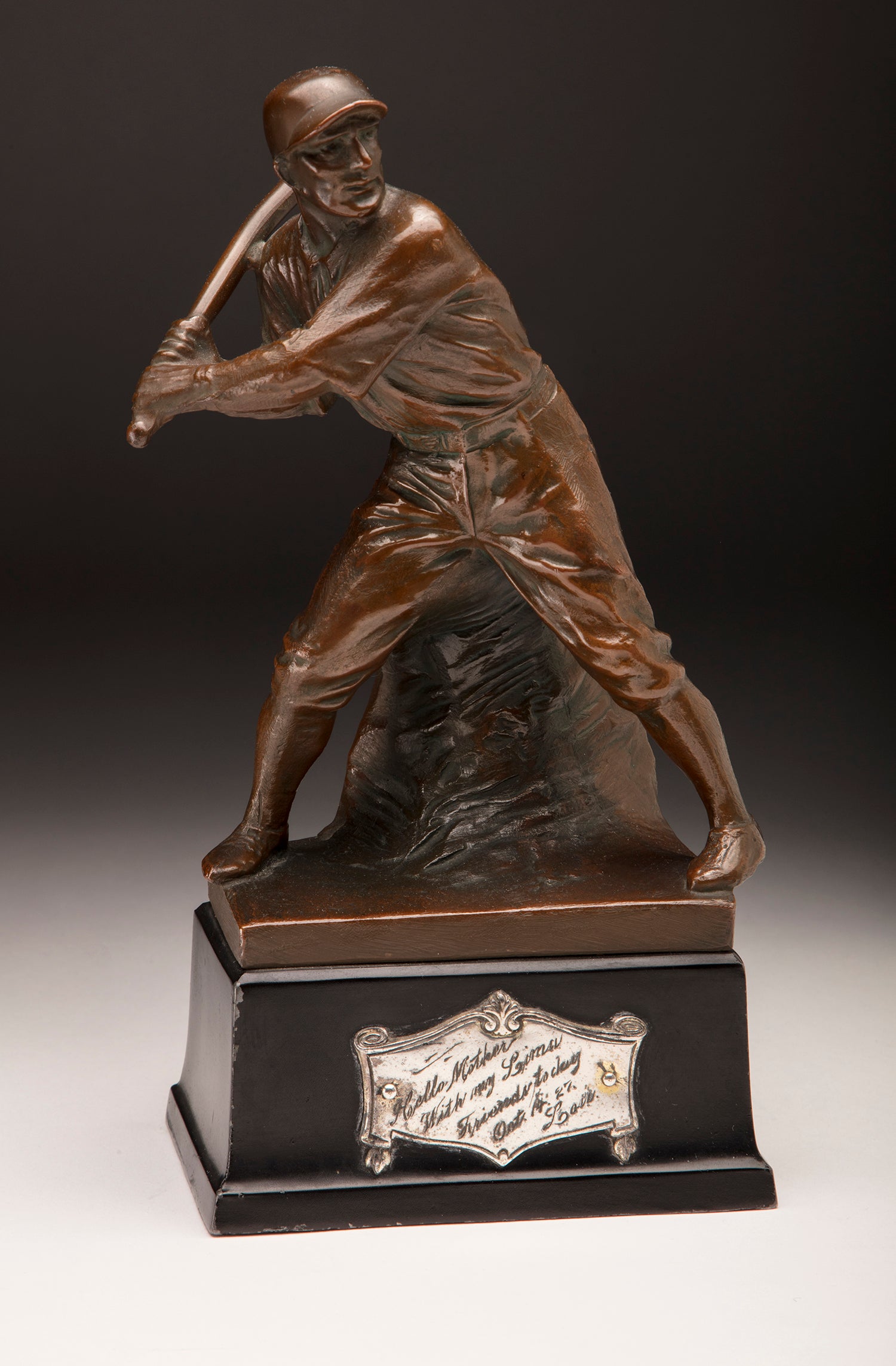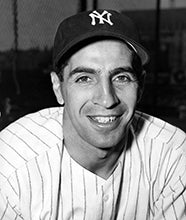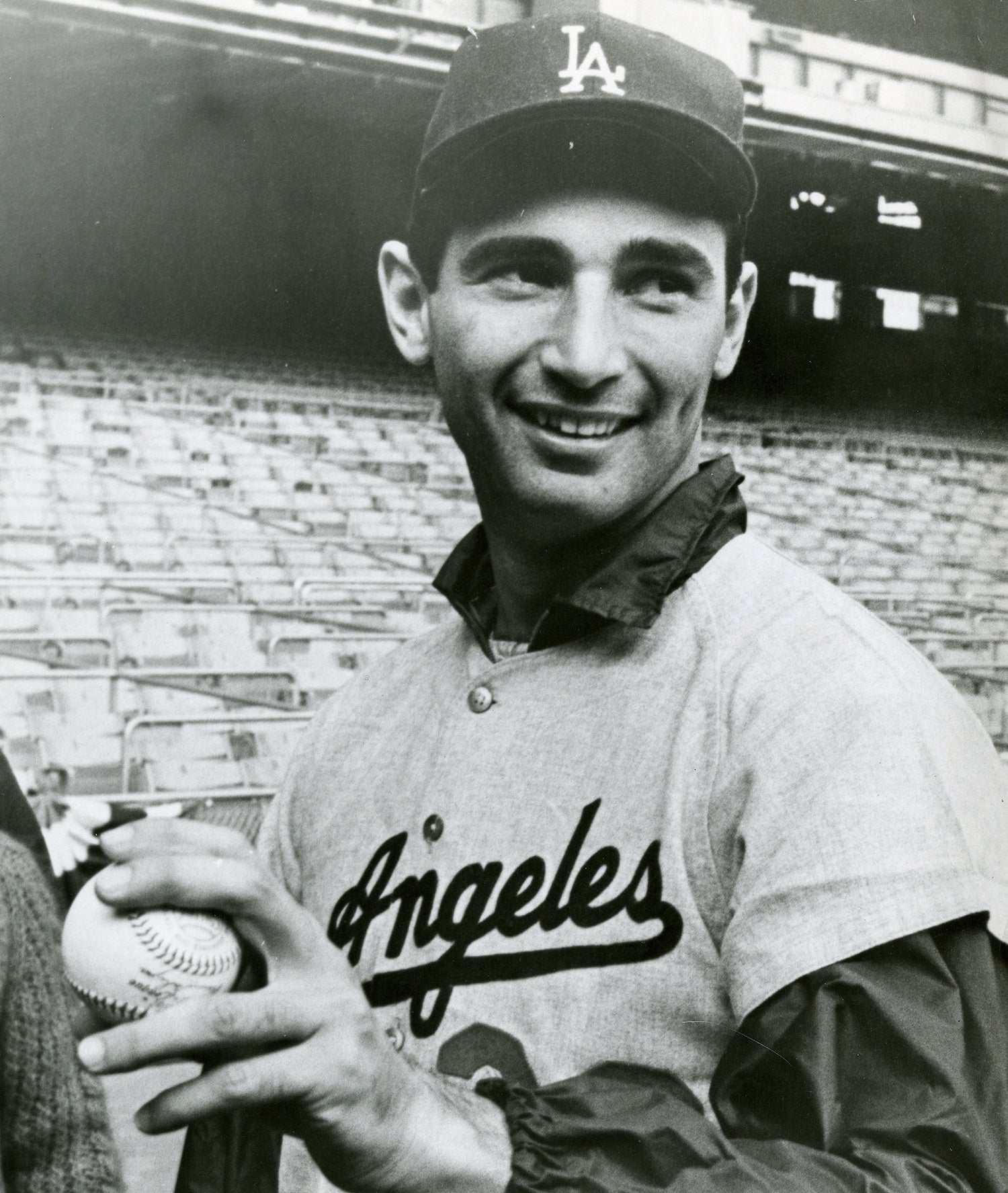- Home
- Our Stories
- Museum preserves historic Hickok Belt
Museum preserves historic Hickok Belt
To the best of anyone’s recollection, Phil Rizzuto didn’t utter a single “Holy Cow!” at that historic banquet in Rochester, N.Y. on Jan. 22, 1951.
But he did shed tears. Plenty of them, in fact, as the shortstop who was once told he was too short to play Major League Baseball stood taller than anyone in the world of sports.
When the stunned Rizzuto appeared at the dais that wintry night to accept the 1950 Hickok Belt Award as America’s top professional athlete, he couldn’t help but reflect on that time as an 18-year-old when he tried out for the Brooklyn Dodgers and was told he’d be better off shining shoes.
Hall of Fame Membership
There is no simpler, and more essential, way to demonstrate your support than to sign on as a Museum Member.
Undaunted, the New York City native auditioned with the crosstown Yankees and was tendered a minor league contract. Years later, after the 5-foot-6 Rizzuto became a Bronx Bomber, he wound up being reunited with Casey Stengel, the former Dodgers manager who had told him to trade his bat and glove for a shoeshine kit.
“I can’t believe it, and I can’t tell you how grateful I am,’’ Rizzuto told a packed banquet hall of about 600 people. “It couldn’t happen anywhere but America. This is the greatest night of my life.”
And that was saying something because the night before had been awfully good, too, as the Baseball Writers’ Association of America informed the player nicknamed “Scooter” that he had been named the American League Most Valuable Player, based on a sensational season in which he batted .325 and helped lead the Yankees to the pennant and a four-game World Series sweep of the Philadelphia Phillies.
Although it was just in its first year of existence, the Hickok Award had gained instant prestige, and over the next quarter century would be regarded as the crown jewel of sports. Imagine if there was an actor-of-the-year award that took into account film, stage and television. That’s the prestige the Hickok held in the sports world because it signified you were not only the best in your particular sport, but the best in all of sports. Kind of like an Oscar, a Tony and an Emmy all rolled into one.
The fact a nationwide panel of about 250 prominent sportswriters and sportscasters voted on the Hickok Belt boosted its credibility. “It was like the Good Housekeeping Seal of Approval for sports,’’ said Hall of Famer Brooks Robinson, who won it in 1970. “It told people that you were the best of the best for that particular year. We athletes are pretty prideful, competitive people. To be able to say you were the crème de la crème is pretty darn special.”
The belt was the brainchild of Ray and Alan Hickok as a way of paying homage to their sportsman father, Stephen Rae Hickok, who had founded the Rochester-based Hickok Manufacturing Company. By the 1950s, Hickok Manufacturing had become the world’s leading producer of men’s accessories, such as belts, wallets, cuff links and tie clips.
Modeled after ornate boxing championship belts, the Hickok award featured a pristine 4 1/3-carat diamond from South Africa, along with a ruby, sapphire and several diamond chips encrusted into a five-pound, 18-carat gold buckle featuring a laurel wreath encircling a generic ancient Greek athlete with his arms raised triumphantly. In the early years of the award, the belt was made from alligator skin.
Jewelers placed the total value at $10,000 to $12,000, roughly a third of what Rizzuto made during his MVP season.
“It really was a thing of beauty,’’ said Dave Anderson, the Pulitzer Prize-winning sports columnist from The New York Times. “It wasn’t like receiving a plaque or a trophy. It was something distinctive, and I think that added to its appeal.”
The belt was presented 27 times before the original award was discontinued in 1976, and baseball players dominated the list of winners. Fifteen times the Hickok was presented to a baseball player, with football players a distant second (five), followed by boxers (four) and golfers (three). Legendary Dodgers lefty Sandy Koufax was the only two-time winner (1963 and 1965). Besides Rizzuto, Robinson and Koufax, other Baseball Hall of Famers to wear the belt were Willie Mays (1954), Mickey Mantle (1956), Frank Robinson (1966), Carl Yastrzemski (1967), Tom Seaver (1969) and Steve Carlton (1972).
Until 1972, the Hickok was presented at a banquet in Rochester that raised funds for children’s charities. For one night a year that mid-sized, Upstate New York city on the shores of Lake Ontario would become the center of the sports universe. For the first 10 years the winner was announced at the podium, and the dinner took on an Academy Awards feel, with athletes from various sports waiting anxiously in the audience to see who would walk away with sport’s version of the Oscar.
The night before the first Hickok presentation, Rizzuto believed he had reached the pinnacle when he was named MVP at the baseball writers’ annual gala in mid-town Manhattan. After that dinner, he and several ballplayers and writers boarded a train at Grand Central Station for the overnight trip to Rochester. Rizzuto figured golfer Ben Hogan, who had battled back from a car accident that almost paralyzed him, or heavyweight boxing champion Ezzard Charles would win the bejeweled belt. And Scooter would have been perfectly fine with that.
“Ben and Ezzard have to do it on their own in their sport, so they’re probably more deserving,’’ the modest Rizzuto told reporters. “I have eight other guys out there helping me succeed.”
The nationwide panel of sportswriters and broadcasters disagreed, as Rizzuto edged Hogan, 162-156, garnering 38 first-place votes to the golfer’s 34. When Master of Ceremonies Jerry Flynn opened the sealed envelope and revealed the winner, Rizzuto was stunned. “When they announced my name, I thought it was a mistake,’’ Rizzuto said in a 1981 interview. “I was on cloud nine. I didn’t think anything could top (winning the MVP award the night before), and then to come to Rochester and win the Hickok . . . ’’
After retiring in 1956, Rizzuto became a Yankees broadcaster for more than four decades, endearing himself to listeners with his humorous, unpredictable digressions and his signature “Holy Cow!” call. Following his induction into the Hall of Fame in 1994, Rizzuto donated several artifacts to the Museum, including the Hickok Belt.
The belt actually was publically displayed for the first time in the winter of 1951 at a New Jersey clothing store where Rizzuto worked in the offseason. Interestingly, he had a jeweler remove the diamonds to make a necklace, earrings and bracelets for his wife, Cora. Non-precious gems were placed in the belt, so that it looked the way it did originally. Other Hickok winners would follow Rizzuto’s lead.
“Let me tell ya something,’’ he joked years later. “I scored some big-time points with the wife. And the jeweler did such an excellent job with the belt’s replacement gems that you couldn’t tell the difference. It still looked like a work of art.”
Ray Hickok, son of the namesake of the Hickok Belt, sits with Roy Campanella of the Dodgers during the 1954 Hickok Belt Awards presentation in Rochester, N.Y. Golfer Ben Hogan won the Belt that year, but many of the finalists were in attendance in the early years that the Belt was presented. (Ray Hickok Collection/Tony Wells Agency)
If you look closely at the belt, you’ll notice that the top of the buckle reads: RAY HICKOK AWARD. The four Hickok Manufacturing employees who designed and made the belt didn’t realize it should have read: S. RAE HICKOK AWARD. It was too late to make the change, but all subsequent belts featured the correct engraving, in honor of the company’s founder.
The last belt was made and presented to Pro Football Hall of Fame quarterback Ken Stabler following the 1976 Super Bowl. By that time Hickok Manufacturing had been sold and moved out of Rochester.
Although no more belts have been produced or given out, the award was revived in 2011, with members of the National Association of Sportswriters and Sportscasters voting for monthly and yearly winners. After his scintillating performance in the 2014 World Series, San Francisco Giants pitcher Madison Bumgarner was named the winner.
He was merely following in the spike steps of a pint-sized shortstop who had been sold short before rising to the top of the sports world.
Best-selling author Scott Pitoniak has published 22 books, including “Jewel of the Sports World: The Story of the Hickok Belt Award.” The nationally recognized sports columnist lives in Penfield, N.Y.

